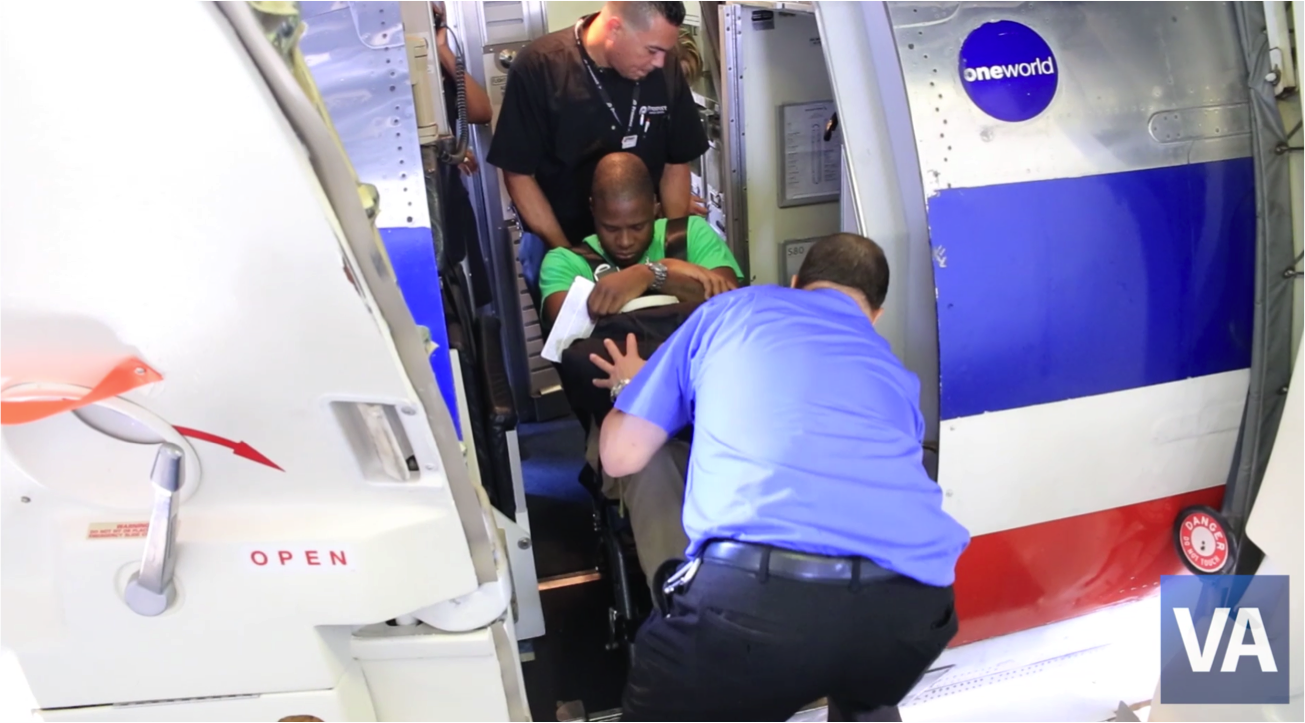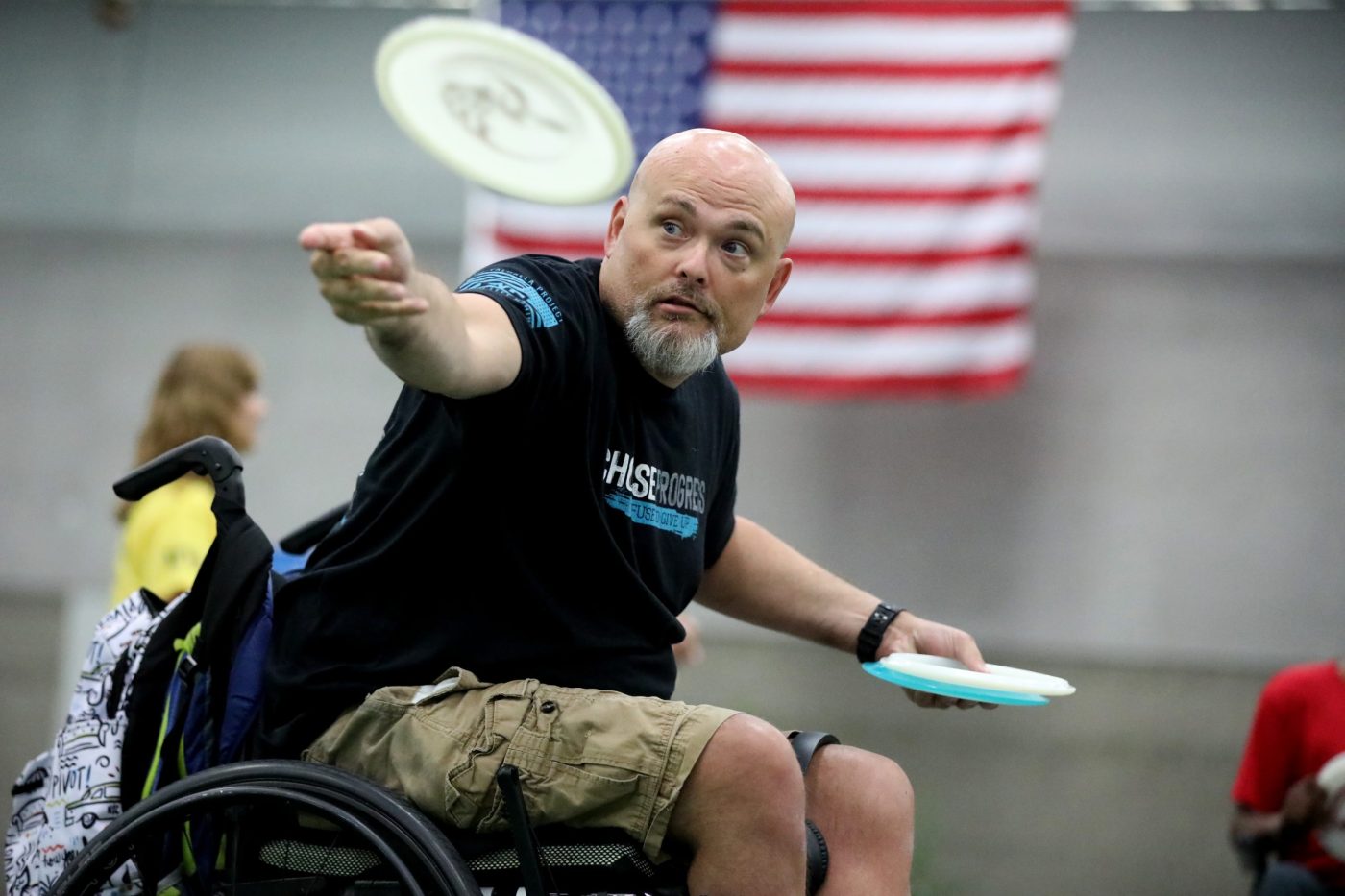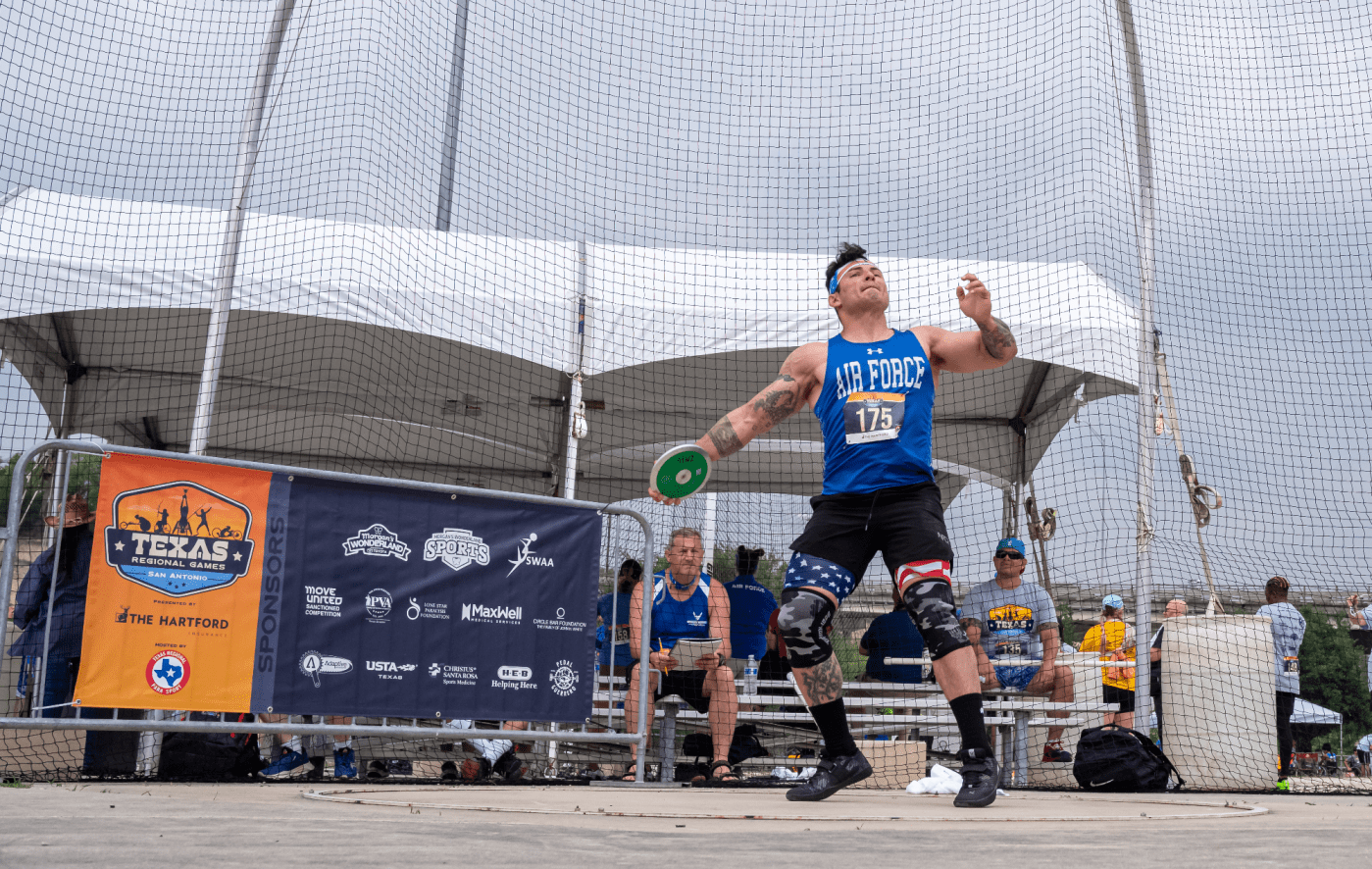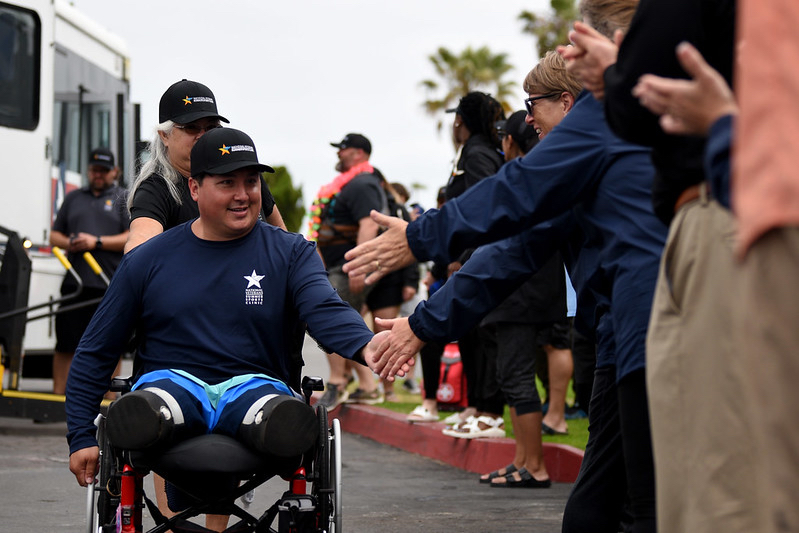The National Veterans Wheelchair Games is impressive. Watching these athletes defy their limitations is truly inspiring. However the most challenging and overlooked part of the games may happen before and after – transportation.
More than 600 Veterans from across the country traveled to Dallas, Texas and they relied upon their VA therapists, caregivers and the airlines to make it happen.
“We have some guys who have traveled before so they know the routine,” said Will Haven, a Tampa, Florida VAMC physical therapist who accompanied his Veterans to the games. “We have a pregame meeting and get together, tell them what to expect and give them a heads up.”
The first hurdle of the games begins at the airport. The scene at the check-in kiosks resemble a military deployment as most Veterans bring an additional specially designed sports wheelchair along with their luggage.
The next phase is security; TSA agents must swab each wheelchair. Some must be transferred to temporary wheelchairs to pass through the detectors. Multiply this process by 10 and it can try the nerves of anyone involved.
Boarding the plane presents its own difficulties. While many of the Veterans have been through this process before, the airline employees may be unfamiliar.
The wheelchairs are too large to fit down the airplane’s aisles so each Veteran must be transferred to an uncomfortable smaller chair. These chairs have no armrests or braces that the Veterans rely on for balance. The seemingly simple turns and bumps become an obstacle course.
The Veterans are then transferred to their seat and will have virtually no option of moving once the flight takes off, not even for a trip to the bathroom. VA staff quickly work together to help accommodate last minute adjustments to make the Veterans more comfortable in their seats.
Once all of the passengers deplane, it’s time to start the process again, this time to the cheer of crowds welcoming them to Dallas, Texas for the games.
The National Veterans Wheelchair Games are a vital part of Veteran’s rehabilitation and transition process. It provides motivation to work towards adaptive goals, but the most important benefit may be the added confidence of knowing that all obstacles can be overcome.
Topics in this story
More Stories
Veterans and volunteers interested in registering online for the 43rd National Veterans Wheelchair Games (NVWG) can do so now through April 5, 2024.
Last year, Move United hosted 26 adaptive sports competitions in 22 states for 1,537 individual athletes. This year, that number is increasing to 35 events in 24 states for even more Veteran athletes.
Registration for the National Veterans Summer Sports Clinic (NVSSC) opens on Dec. 1, 2023, and runs through March 1, 2024. The 2024 NVSSC will take place August 25-30 in San Diego, California, offering an extended opportunity for Veterans to partake in adaptive sports.







I can only imagine the angst and frustration of having to board and de-board an airplane in a wheelchair. My father has many problems with his feet during his time and cannot walk long distances on hard surfaces or stand in one place for awhile without his feet burning up on him. This is a new revelation for him so we have inclined to wheel him and it is more than I could have imagined as far as difficulty for all parties involved. The National Veterans Wheelchair Games are special to watch and just amaze me at times what they can do. That’s a lot of young energy in one place.